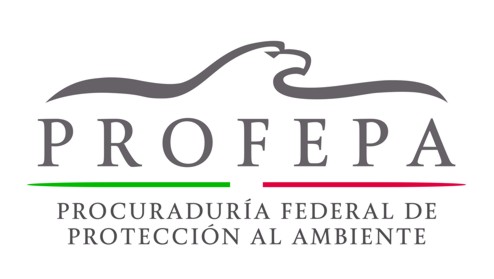Our History
The evolution of global environmental policy and global natural resources management is grouped into three main stages:
a) The corrective approach (70's): the actions are focused on the fight against pollution and deterioration of natural resources.
b)The management of natural resources and systems approach (80's): the actions are focused on the administration of natural resources, but they are mixed up with the corrective approach.
c) The prevention approach or policy (current): it begun in the late 80´s and it is now in a new formulation stage. Strategies of the two previous approaches remain on this policy.
With some years of difference, the environmental policy and natural resources management in Mexico were developed in agreement with the previous period times and approaches, although they display their own specific elements, because of the administrative style and changes occurred within the policies and the governmental structure in the country.
Nevertheless, as in the majority of the countries, the Mexican environmental policy and natural resources management are the result of a set of complex factors, standing out among them, the increasing of natural devastation caused by atmosphere deterioration, industrialization processes, over-exploitation and urbanization, which gained strength during the postwar period.
Another factor that contributes to the current configuration of Mexican environmental policy and natural resources management is the critics to the development models, as it was seen during the Stockholm Conference in 2009, which represented a watershed on this issue and marked the direction to go on during the years to come.
The Federal Law to prevent and to control the Environmental Pollution (1971) and the foundation of the Undersecretary's Office of Improvement of the Atmosphere (1972) in the Ministry of Health and Assistance (Secretaría de Salubridad y Asistencia - SSA), were the first framework to respond, focused on human health problems caused by pollution.
A set of problems, among them, the derivatives of the cattle expansion, massive deforestation of the tropical forests in the Mexican south-east, the impact of oil industry and the increasing displeasure of a great number of social groups that began to organize themselves around the environmentalist movement, exceeded this first institutional frame, which resulted in the foundation of the Ministry of Urban Development and Ecology (Secretaría de Desarrollo Urbano y Ecología - SEDUE) and the Undersecretary's Office of Ecology within the SEDUE, in the early 80's. It was then, that a chapter of Ecology was included on the National Plan of Development (1983-1988). The legal frame was also modified with the issue of the Federal Act of Protection to the Atmosphere in 1983.
SEDUE formulated the National Plan of Ecology 1984-1988, as a first effort to develop a diagnostic of the environmental situation, proposing corrective and preventive measures. Those measures related to air and water pollution were expressed as the general direction of SEDUE.
SEDUE scored significant advances in the 80´s, particularly on the pollution control, the increased area declared under some kind of protection, and the formulation of a policy framework that included the General Law of Ecological Balance and Environmental Protection (LGEEPA-1988).
The slow results in some other areas; increasing of the problems concerning natural resources; disarticulation of the sector; low priority of environment in the federal, state and municipal policies -clearly being reflected in the allocation of budgets-; and the remarkable expansion of public awareness around this issue, determined the creation of the Ministry of Social Development (Secretaría de Desarollo Social - SEDESOL-1992), leading to a better articulated institutional framework between social and environmental policies.
These changes meant the reorganization of the SEDUE into two decentralized organs of SEDESOL: The Federal Attorney of Environmental Protection (Procuraduría Federal de Protección al Ambiente - PROFEPA) and the National Ecology Institute (Instituto Nacional de Ecología - INE). PROFEPA with the mission to watch, monitor and verify compliance with the regulations and provide remedies and penalties for breaches to legislation. The second one, to formulate and issue standards and environmental criteria in order to evaluate environmental impact statements, manage natural protected areas that were not placed under the responsibility of other agencies, and be in charge of land-use planning in an ecological way.
Thus, forest resources and land were responsibility of the Ministry of Agriculture and Water Resources (Secretaría de Agricultura y Recursos Hidráulicos - SARH) and the National Water of Commission (Comisión Nacional del Agua - CNA, dependant of SARH), while fishery resources were subject to the Ministry of Fishery.
Similarly, to address issues related to biodiversity, the National Commission for Knowledge and Use of Biodiversity (Comisión Nacional para el Conocimiento y Uso de la Biodiversidad - CONABIO) was created under presidential agreement on March 16th, 1992. Meanwhile, the National Commission for Arid Zones was founded as a decentralized agency on December 5 th, 1970.
The legal framework on environment and natural resources includes basically: the General Act of Ecological Balance and Environmental Protection (LGEEPA-1996), the Forestry Act (1997), the National Water Act, the Land Act, the Soil Conservation Act, the Fishery Act, the National Property Act and the General Act on Human Settlements.

- Última modificación :
Wednesday 8 de January de 2014.